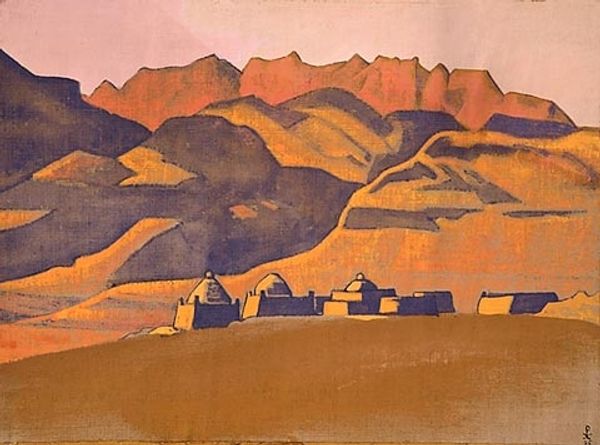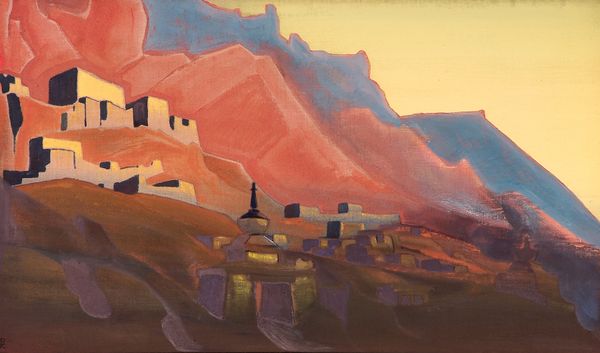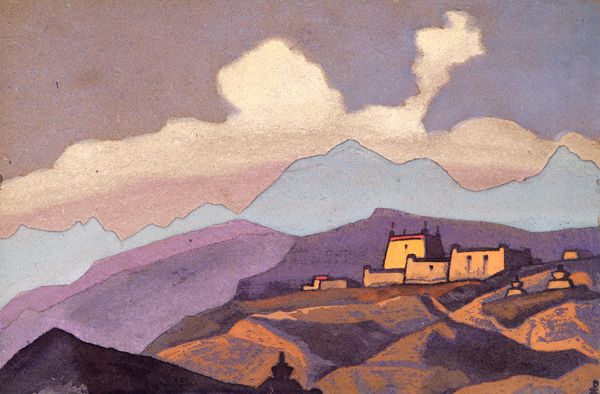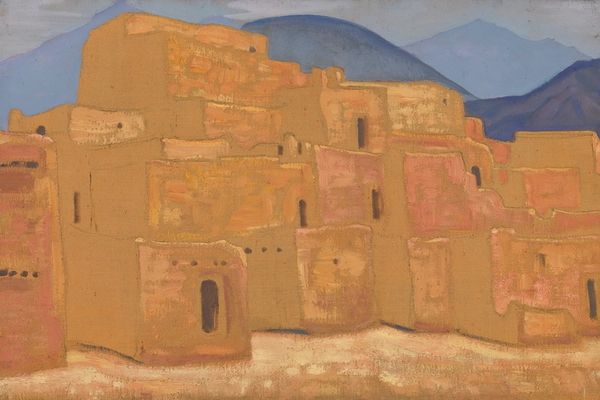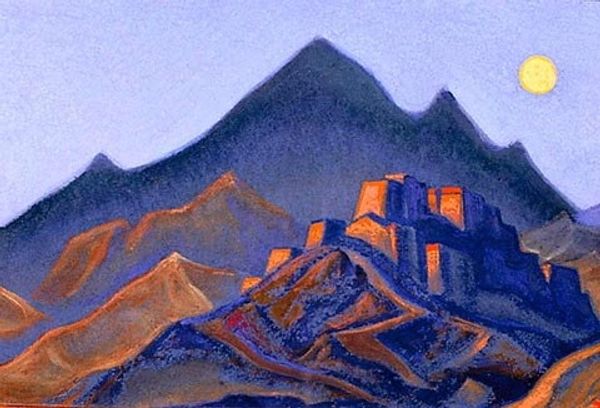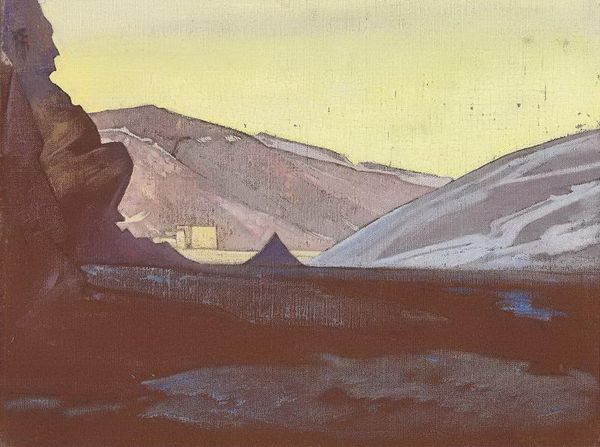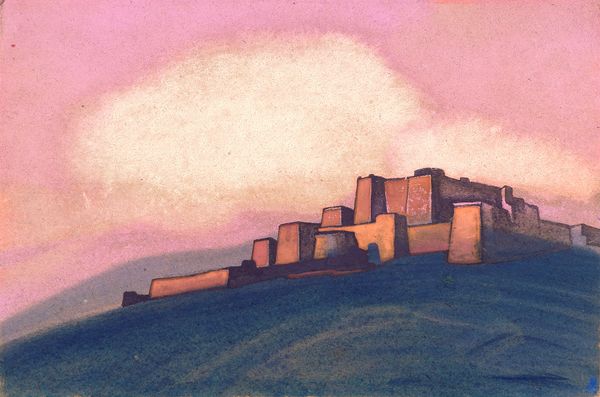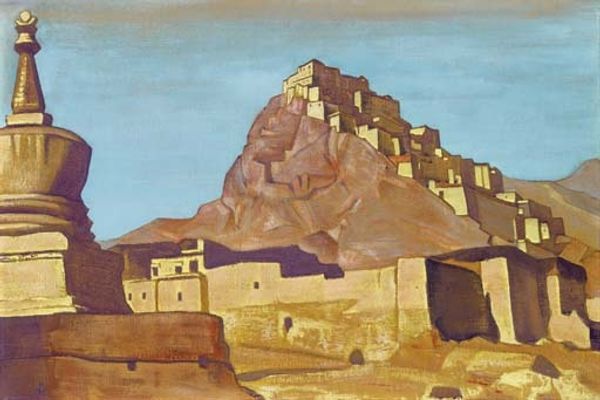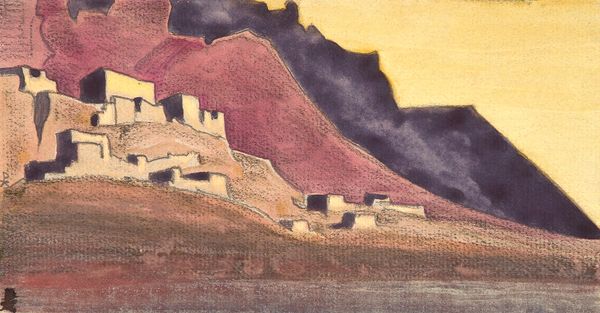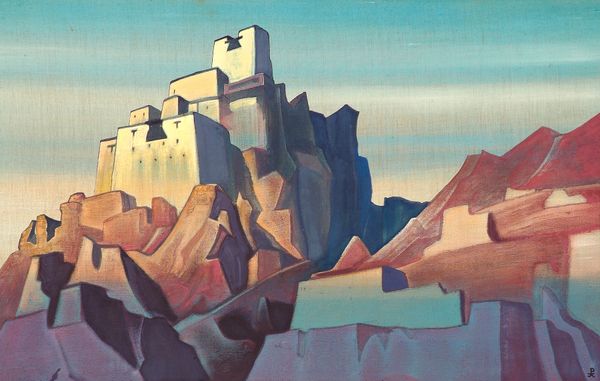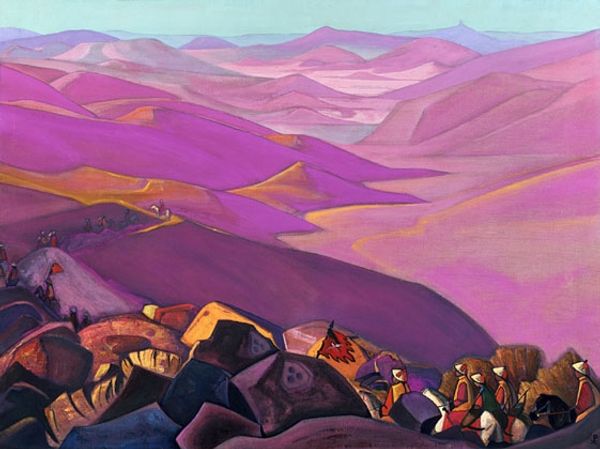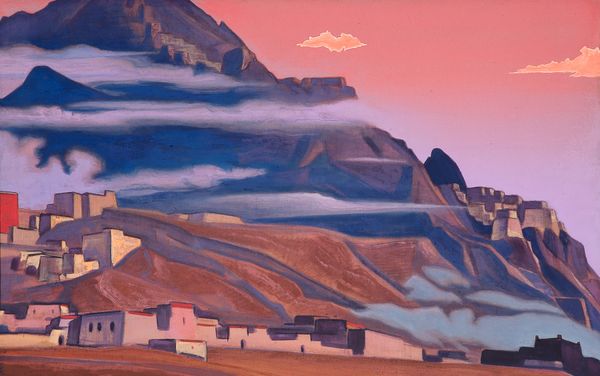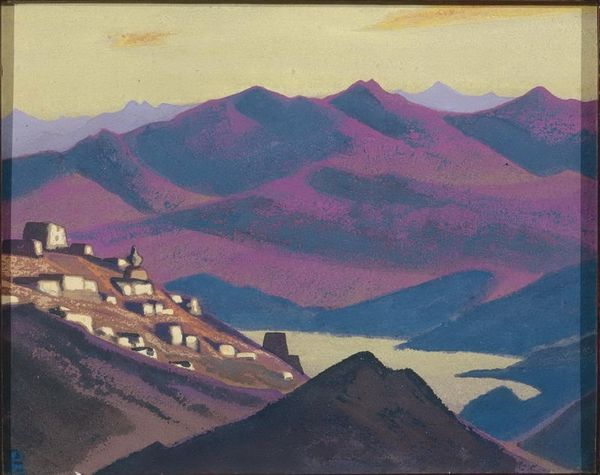
#
sky
#
abstract painting
#
water colours
#
possibly oil pastel
#
handmade artwork painting
#
fluid art
#
underpainting
#
mountain
#
painting painterly
#
watercolour bleed
#
watercolour illustration
#
watercolor
Copyright: Public domain
Editor: This is Nicholas Roerich’s “Chatu Gompa,” created around 1940 using watercolors. I am struck by how the vibrant purples and ochres create a surreal, dreamlike landscape. How might the historical context inform our understanding of this place, this Gompa? Curator: Roerich’s work, especially from this period, exists within a fascinating nexus of spirituality, theosophy, and geopolitics. The Himalayas weren't just a landscape for him; they represented a sacred space, a site of potential, even utopian, social transformation. How do you think the very act of painting and exhibiting such scenes shapes public perception? Editor: That's interesting. I suppose it romanticizes the region, perhaps overlooking social or political complexities in favor of a spiritual narrative. The intense color almost feels… idealized. Curator: Precisely! And that idealization is not accidental. Roerich was deeply involved with the Roerich Pact, an early international agreement focused on the protection of cultural sites during wartime. Knowing this, does that utopian quality resonate differently with you now? Editor: It does. The Gompa itself becomes more than just a building; it’s a symbol, something worth protecting—an idea, perhaps? Curator: Exactly. He's advocating for preservation, placing Eastern spirituality within a Western framework of cultural heritage and international law. Consider who this was intended to reach; a European and American audience unfamiliar with the intricacies of the region. How would a westerner absorb such artwork differently than someone with Eastern ties? Editor: So, it’s not just a beautiful landscape, but a political statement, an attempt to influence policy through visual representation, promoting global peace through art? That's much deeper than I initially thought. Curator: Precisely, and a powerful example of how art shapes, and is shaped by, socio-political forces. It prompts reflection, and deep consideration regarding our engagement with different cultures. Thank you for letting me explore this idea with you. Editor: I'll definitely look at landscapes differently from now on. Thanks!
Comments
No comments
Be the first to comment and join the conversation on the ultimate creative platform.
